The Bag
You can go all-out and pick a gigantic hiking backpack. You can use one of your old Jansports from college. It doesn't matter as long as you can fit the necessities in there and carry it pretty comfortably. You might want to consider water-proofing it in some fashion or another.
Water
This is the most important thing in your bag. Ideally, each adult needs one gallon of water per day. That's three gallons a person....can you carry that much, plus food, clothes, tools, etc.? Probably not. You are going to want to carry some, like this emergency drinking water from Amazon. Other than that, you will need to get it as you go. You need means to boil it, purify it with iodine tablets, or filter it with something like this in conjunction with coffee filters. Make sure to bring a variety of containers (which you fill before you leave) as well.
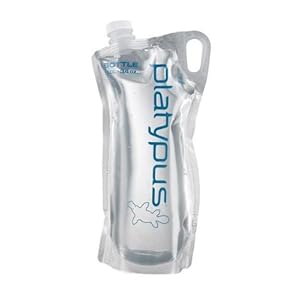 |
| These 1-liter bottles are nice because they take virtually no space when empty. |
 |
| It's a good idea to have a stainless steel canteen as well, for the purpose of boiling water. |
Food
Unless you are a superb hunter or fisherman, you are going to want to bring enough food to last you three days. Canned items like veggies or Hormel chili are cheap, but they are heavy. Or you could go the freeze-dried option, the meals-ready-to-eat (MRE) option, or the emergency rations (ER) option. Make sure you bring along some multi-vitamins to supplement whatever option you pick, as well as some sort of utensil for eating.
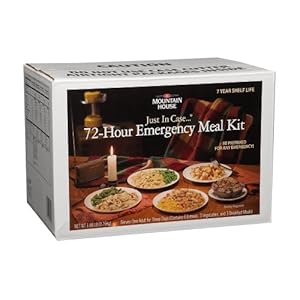 |
| This freeze-dried option by Mountain House is pretty awesome. Keep in mind that a kit like this will often need boiling water, but they are pretty tasty and cheaper than MREs. |
 |
| MRE. These require heat (included). However, they are pretty expensive unless you can get them from someone who is actually in the military. |
 |
| Emergency rations. These are the cheapest, most lightweight, compact, and disgusting option. One bar can have 2400-3200 calories...if you pick this, bring something like trail mix or dried fruit so you don't dread mealtime. |
Fire
You always need multiple ways to start a fire. Stormproof matches are a good place to start. You'll also want a lighter of some kind--they sell fancy ones, but a BIC or a Zippo will do. A magnesium fire starter and a sparkie fire starter are also good ideas. Don't forget kindling--cotton balls and petroleum jelly work well, and can also be used for first aid.
Navigation, Communication and Signalling
Every member in your family should have a good, loud whistle like this. Period. End of story. You can keep it on your keychain--so no excuses. A signal mirror is an excellent idea as well--you may need to get the attention of planes or helicopters for rescue.
As for navigation, a GPS (like on a cell phone or Garmin) may work, but to be safe, you should keep manual methods as well. Keep a map of your area and laminate it to keep it water-proof. Invest in a compass and learn how to use these things as well.
 |
| A compact AM/FM radio is a good idea, to keep track of updates on the situation. This one is by Eton is pretty fancy, with solar power, wind-up crank, cell phone charger, and flashlight. |
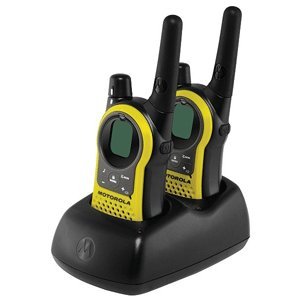 |
| Walkie-talkies are also a good idea...in case you get separated, to find people in surrounding area, etc. |
Clothes
Every region is going to have different requirements, but make sure you pack comfortable shoes and moisture-wicking socks. In cold weather, thermals are a good idea as well. Not going to go into much detail here because everyone is different, but I am going to make two suggestions:
 |
| A shemagh is an arab-style scarf that is much larger and more durable than a bandana. They have TONS of uses, including sun and dust protection when wrapped around the face, towel, pot holder, turniquet, makeshift bag, pillow...etc. |
First Aid
Being a nurse, I am extremely discriminating about first aid kits. They always seem to have a thousand bandaids and nothing of real value. This one from First Aid Only is a good starting point. I'd pack some of my own stuff in it, including: burn cream, some more gloves, antibiotic ointment, a turniquet, ibuprofen, Immodium, Benadryl, some moleskin, Tylenol, cellox hemostatic granules, compression dressing, hand sanitizer, Pepto-Bismol tablets, and antibiotics.
Tools
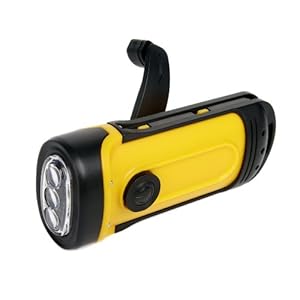 |
| Good, bright flashlights are a must. We like this one because of the rechargeable wind-up mechanic and the fact it's weatherproof. Lightsticks and road flares are good, non-battery options and you should use one of those as a back-up light method as well. |
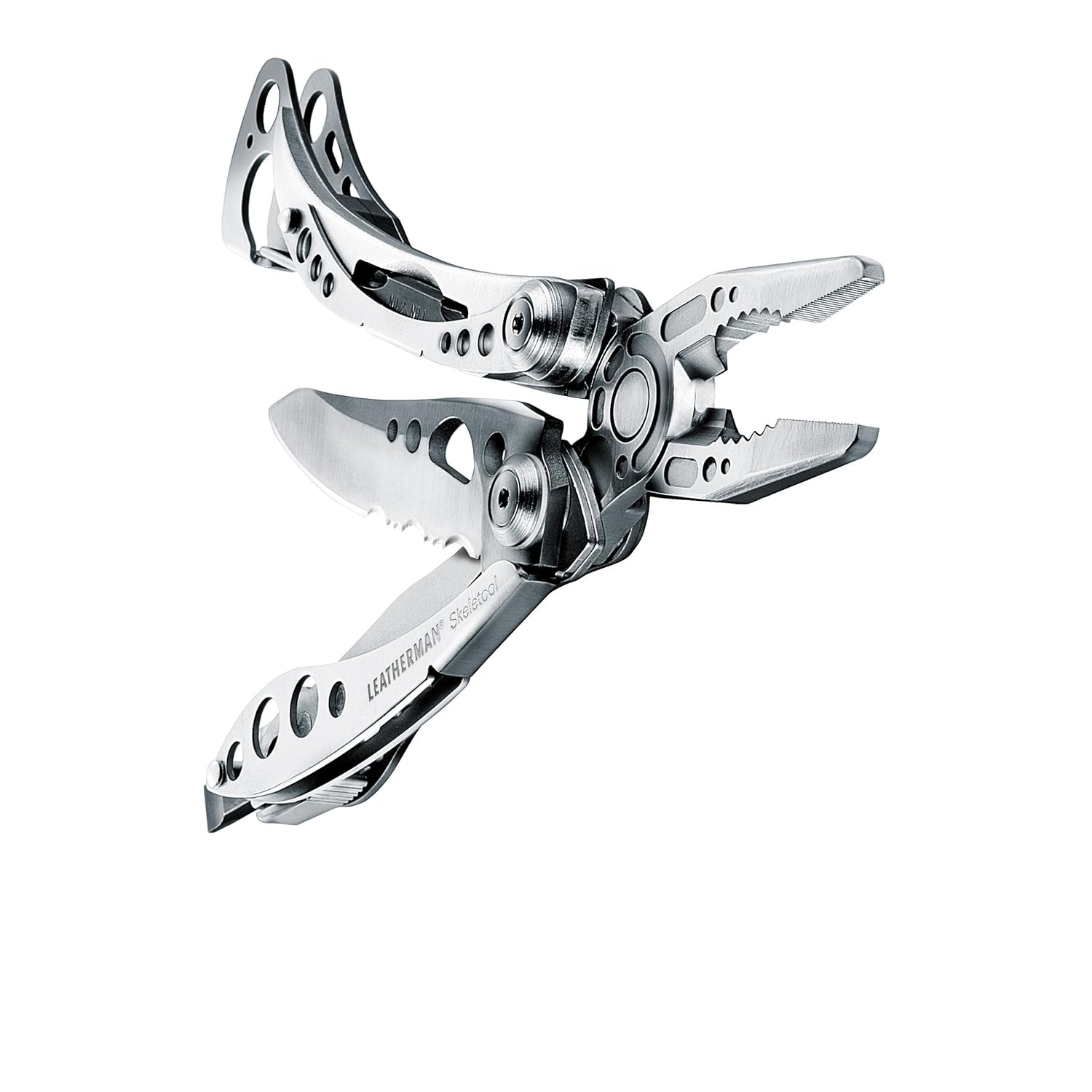 |
| A multi-tool can help you out in a variety of ways. Leatherman is a good brand. |
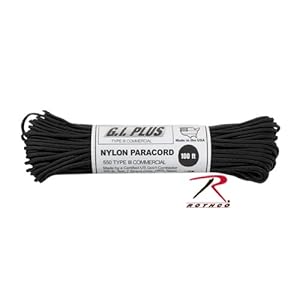 |
| 550 paracord is one of those things that does a million things, from creating shelter, tying things up, making a turniquet, making a fishing line, etc. It's cheap. Get some. |
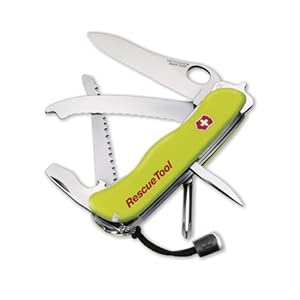 |
| Swiss Army knife...a variety of uses that will accompany your multi-tool. |
 |
| I know, a sewing kit may seem like the last thing you need. This one has a variety of needles (which you may need to suture), thread, wire, as well as duct tape. If you don't buy a sewing kit, I'd include these things in your bag anyway. |
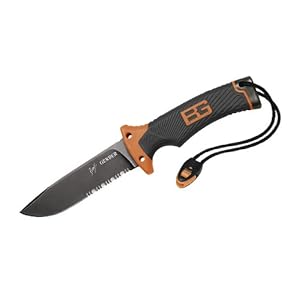 |
| Yes, a survival knife. The little Swiss Army one is helpful, but not for everything. This one by Gerber has it's own sharpener as well as a firestarter on it, and in real bad situations, can also be used for self-defense. |
Protection and Shelter
I mean protection from the elements here, people. You'll probably want some sunblock (I like Bullfrog because I know a little goes a long way) and bug spray (to help prevent complications like malaria and lyme disease). Protect your lungs with an N-95 respirator. Ponchos, emergency shelter, and thermal mylar blankets are all great ideas. You can also get a sleeping bag, bivvy, or real two-person tent, but that's when things start to get really heavy. JJ and I are leaning towards cold-weather gear because we live on the East Coast, but Arizona folks may want to lean towards desert protection.
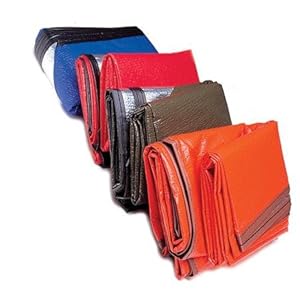 |
| I like this blanket from Space-All because it's thermal, but can function as a tarp or a little tent in a pinch. |
Other Helpfuls
Hygiene kit. Those travel-size hotel freebies work great. You may also want to include Kleenex packets or toilet paper (it's more compact if you unroll it and fold it up). Don't forget a toothbrush and deodorant!
Cash. You're not going to want to bring a TON of cash, but if you are in a survival situation, you may need some.
Important documents. You may want to copy them, or scan them onto a flashdrive. Things to include: driver's licenses, passports, social security cards, health insurance information, immunization records, firearm carrying license, contact information for people you know, important family pictures (may be used to help identify and reunite as well), work licenses (ie, RN license), pertinent financial documents, and health information for your pets (ie, rabies vaccination).
Items for Pets. We keep Meeko's carrier next to the bed in case anything happens, so we won't have to search for it. Keep an extra leash and flea collar in your bag, as well as food/treats for your pet and something for them to eat/drink out of.
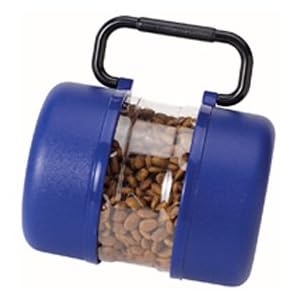 |
| We like this container from Traveltainer because it includes the eating and drinking cups. |
Firearm. Not for everyone, but unfortunately for humanity, when shit hits the fan, there are some people out there who revert to stealing and hurting people to help themselves. Something to consider.
Other Ways to Prepare
Keep your bag in a close location, so you can grab it at a moment's notice. Keep up-to-date on your Hepatitis A and Tetanus, Diptheria, Pertussis vaccinations. Have a plan. Talk about the plan. Act out the plan. Teach all children and pets about the plan. Meeko knows his carrier is a safe space. Anytime we pick it up and put it in the living room, he runs right in....that definitely was helpful on Friday night.
Anyway, I know that was a LOOONG post, but I think it's important. I don't claim to be any sort of survival expert, but I think everyone should work on a kit like this...even if all you can swing right now is an old backpack, some granola bars, some water bottles, clean socks and underwear, and copies of your documents, DO IT. You'll still be way more prepared than most people, and you can always upgrade as you go.
What do you have in your survival kit?

